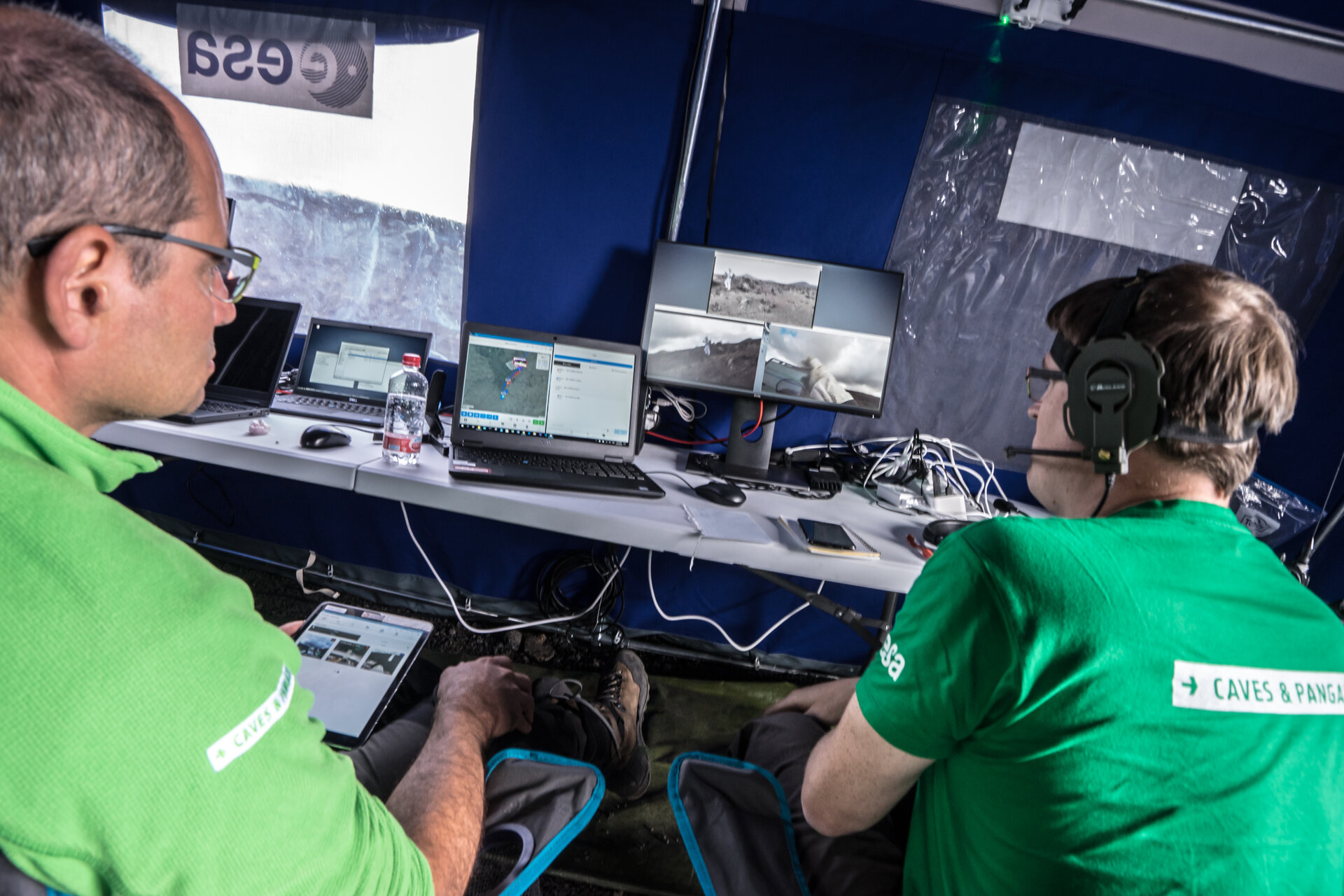Space training team – Planetary Mineral Database Development and Validation of Spectra Classification Methods
The European Astronaut Centre (EAC) is looking for an adept intern to continue development of Analytical Toolset for recognition of Planetary Materials and Validation of Spectra Classification Methods as a part of the CAVES & PANGAEA team projects. The full-time internship is based at EAC, near the city of Cologne, Germany.
Our team and mission
PANGAEA (Planetary ANalogue Geological and Astrobiological Exercise for Astronauts) is a geological and astrobiological field training course for astronauts and mission developers. It develops fundamental knowledge and skills in these disciplines, as well as observational and decisional skills such as identifying important geological features in the field, conducting efficient sampling and effectively communicating with scientists on Earth. Complementary to its training goals, PANGAEA is also used as a research and development platform to enable advances to be made in several technological, scientific and operational areas.
CAVES (Cooperative Adventure for Valuing and Exercising human behaviour and performance Skills) teaches astronauts human performance and behavioural skills for exploration tasks through an expedition into a natural cave system. Cave systems present environments and situations very similar to spaceflight, making them ideal for this type of training. The scientific exploration conducted by the astronauts during CAVES also enhances human understanding of cave environments.
Activities and learning areas

Geology and geo-microbiology research is a primary scientific goal in current satellite and rover missions to Mars, Moon and asteroids, and these disciplines will have an even greater importance in future manned planetary exploration.
In the coming years, European astronauts will be involved in defining and planning unmanned and manned missions underpinned by geological exploration. Consequently, knowledge about general geology and planetary geology will be crucial to their role as an astronaut. Additionally, many of the Earth Observation tasks currently performed from the International Space Station have a strong relationship with geology.
Future human missions that return to the Moon or land on the surface of Mars will require astronauts to perform geological exploration during Extravehicular Activities (EVAs). With the right preparation, astronauts will be required to quickly identify key mineral resources, perform on-site analyses and collect valuable samples. This process will be greatly enhanced by portable analytical tools capable of combining various types of spectroscopic methods (such as VNIR, Raman, LIBS, XRF, etc.) that allow rapid mineralogical and elemental analysis of prospective samples. To make these instruments effective, they must be equipped with the appropriate reference libraries and software to ensure the scientific data collected is accurate and easy to interpret. This will allow improved decision making and flexecution to be applied by the astronauts, even without the support of the scientists from ground control. To enable this, our team is working to enable the Electronic Field Book (EFB) system to record, accurately classify, enriched with relevant information, and distributed to all relevant mission support teams, spectroscopic data collected in the field. Two key projects are currently being developed to help achieve this, the PANGAEA Mineralogical Database (MinDB), and a machine learning toolset (MLtools).
The MinDB is a structured set of information on all the rocks and minerals detected on the Moon, Mars and other planetary bodies, coupled with information on most effective methods to identify them in-situ. A key part of this is a library of standard spectra. These spectra are collected based on available open access on-line catalogues as well as from our own bespoke spectroscopic measurements (VNIR, Raman, LIBS & XRF) of planetary analogue minerals from different collections. The spectral library is specifically designed to improve the classification of minerals by offering a bespoke database focused on planetary materials. This project focuses on combining several mineral characteristics to achieve their fast and reliable in-situ classification.
The main task of the internship is to continue enhancing and developing PANGAEA analytical toolset consisting of multi-spectral archives and the Mineralogical Database, which has been developed during previous internships. This will include, searching and validating molecular and atomic spectra of minerals and their mixtures, maintaining the PANGAEA mineralogical database, and testing the developed Machine Learning software to evaluate the most suitable combination of spectral methods for identification of planetary materials.
Specific duties

Candidates will be assigned specific duties based on their background.
- Validate the spectroscopic library of relevant minerals.
- Evaluate the most effective combination of analytical methods (such as VNIR, Raman, LIBS, XRF) to identify minerals of interest.
- Update information on the rocks and minerals potentially present on the surface of the Moon, Mars and other Solar System bodies, including components of magmatic rocks, meteorites, impact and weathering products.
- Integrate acquired data and spectra into a training dataset for Machine Learning software that is being developed in parallel as a part of the PANGAEA EFB.
- Preparation of the astronaut field-training course, PANGAEA, including making improvements to lesson materials, presentations and documentation.
Competencies and skills
Preferred educational background in mineralogy, geology, geochemistry, physics, planetary or other natural sciences.
- Good knowledge of analytical methods and spectrometers for molecular and atomic spectroscopy, mineralogy or geo-chemistry. Experience in using or designing the spectroscopic instruments, and/or working with the information catalogues and databases.
- Attendance, during studies, of courses related to planetary geology, astrobiology or planetology would be an asset.
Internship start dates are flexible. Candidates should be available for six months. Shorter internships can be negotiated on a case-by-case basis, the minimum length being four months.
Applications are open until 11 July 2025.
Click here to apply: Intern in the Space Training Team, Analytical Toolset development (CAVES & PANGAEA) Job Details | ESA















 Germany
Germany
 Austria
Austria
 Belgium
Belgium
 Denmark
Denmark
 Spain
Spain
 Estonia
Estonia
 Finland
Finland
 France
France
 Greece
Greece
 Hungary
Hungary
 Ireland
Ireland
 Italy
Italy
 Luxembourg
Luxembourg
 Norway
Norway
 The Netherlands
The Netherlands
 Poland
Poland
 Portugal
Portugal
 Czechia
Czechia
 Romania
Romania
 United Kingdom
United Kingdom
 Slovenia
Slovenia
 Sweden
Sweden
 Switzerland
Switzerland

























